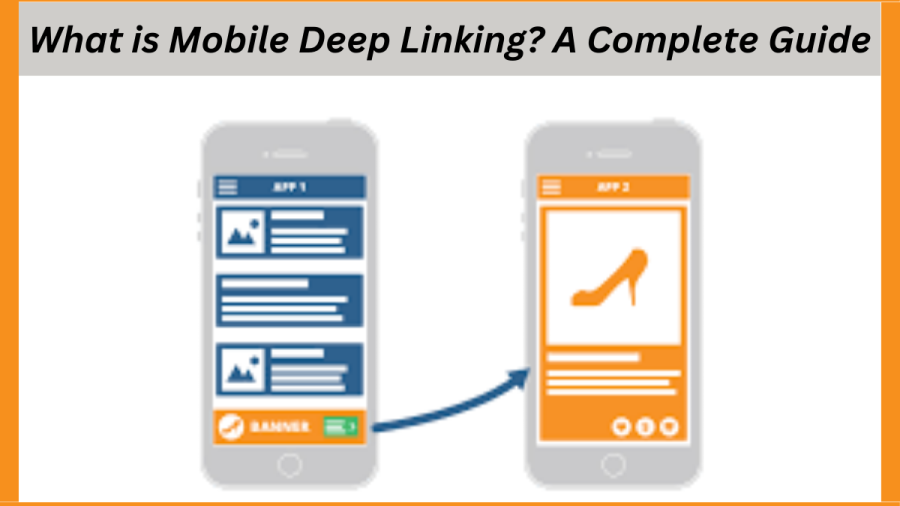In the fast-paced world of mobile technology, developers are consistently seeking innovative ways to enhance the user experience. Simultaneously, marketers strive to increase app engagement through various strategies. One powerful tool that has gained popularity in recent years is mobile deep linking. Mobile deep linking enables developers to direct users to specific content within a mobile app, bypassing the traditional route of launching the app’s homepage. This streamlined approach enhances user experience and simplifies navigation, resulting in a more seamless app interaction. In this comprehensive guide, we will explore what mobile deep linking is and how it works. Additionally, we’ll delve into the benefits it offers for developers and marketers, providing valuable insights into this powerful tool for enhancing user engagement.
Understanding Mobile Deep Linking
Mobile deep linking is a technique that empowers users to navigate directly to a specific page within a mobile app. This functionality avoids the necessity of redirecting to the app’s homepage. Resulting in a more seamless and personalized user experience. It works by utilizing a uniform resource identifier (URI) scheme or a custom URL scheme that associates the deep link with a particular piece of content within the app. Clicking a deep link triggers the app to open and directs the user to the desired location.
How Mobile Deep Linking Works
Mobile deep linking operates by utilizing unique URLs that associate with specific app content. Designers create these URLs to carry information about the desired destination within the app. When a user clicks on a deep link, the operating system intercepts it and checks. If the user has installed the corresponding app on their device, the app receives the deep link, interprets the URL, and guides the user to the relevant content.
Types of Mobile Deep Links
There are three primary types of deep links commonly used in mobile apps:
- Standard Deep Links: Standard deep links are URLs that are associated with specific content within an app. When a user clicks on a standard deep link, it directly opens the app and takes the user to the designated content.
- Deferred Deep Links: Deferred deep links are similar to standard deep links. However, they offer additional functionality for situations where the app is not installed on the user’s device. If the app is not present, the deferred deep link redirects the user to the app store for download. Upon installation, the user gets directed to the specific content within the app.
- Contextual Deep Links: Contextual deep links contain additional information that helps personalize the user’s experience within the app. They allow developers to pre-fill forms, customize settings, or display specific content based on the deep link parameters.
Benefits of Mobile Deep Linking
Mobile deep linking offers numerous advantages for both developers and marketers:
- Enhanced User Experience: Deep links enable users to access specific content within an app instantly, providing a seamless and intuitive experience. This eliminates the need for users to navigate through the app manually, saving time and improving engagement.
- Increased App Engagement and Retention: By directing users to relevant content within the app, deep links encourage continued app usage and increase user retention. Leveraging deep linking, companies can re-engage dormant users by sending personalized notifications based on these users’ previous interactions.
- Improved Conversion Rates: Deep links can be used in marketing campaigns to drive conversions. By directing users to a specific product or offer within an app. Marketers can provide a targeted and personalized experience, increasing the likelihood of conversions.
- Cross-Platform Support: Mobile deep linking works across different platforms, including iOS and Android, allowing developers to provide a consistent experience for users regardless of their device.
- App Indexing and Search Engine Optimization (SEO): Deep linking plays a crucial role in app indexing, enabling search engines to index and rank app content. This helps improve app discoverability and drives organic traffic to the app.
Implementing Mobile Deep Linking
To implement mobile deep linking in your app, you need to follow these steps:
- Define the deep link structure: Determine the structure and format of your deep links. Decide on the parameters and values that you will use to identify specific content within the app.
- Register the deep link scheme: Register a custom URL scheme or use a universal link for iOS and an intent filter for Android to associate the deep link URLs with your app.
- Handle deep links within the app: Implement the necessary code within your app to handle incoming deep links. Extract the parameters and values from the deep link URL and navigate the user to the corresponding content.
- Test and refine: Test your deep links thoroughly on different devices and operating systems to ensure they function correctly. Monitor the analytics and performance to refine your deep linking strategy.
Conclusion
Mobile deep linking is a powerful technique that allows developers and marketers to provide a seamless user experience, increase app engagement, and drive conversions. By directing users to specific content within an app, deep links enhance the usability of mobile applications and help create personalized experiences. Understanding the different types of deep links and implementing them effectively can greatly benefit your app’s success. With the continuous growth of mobile technology, developers and marketers alike are setting mobile deep linking to become an essential tool in their arsenal.

